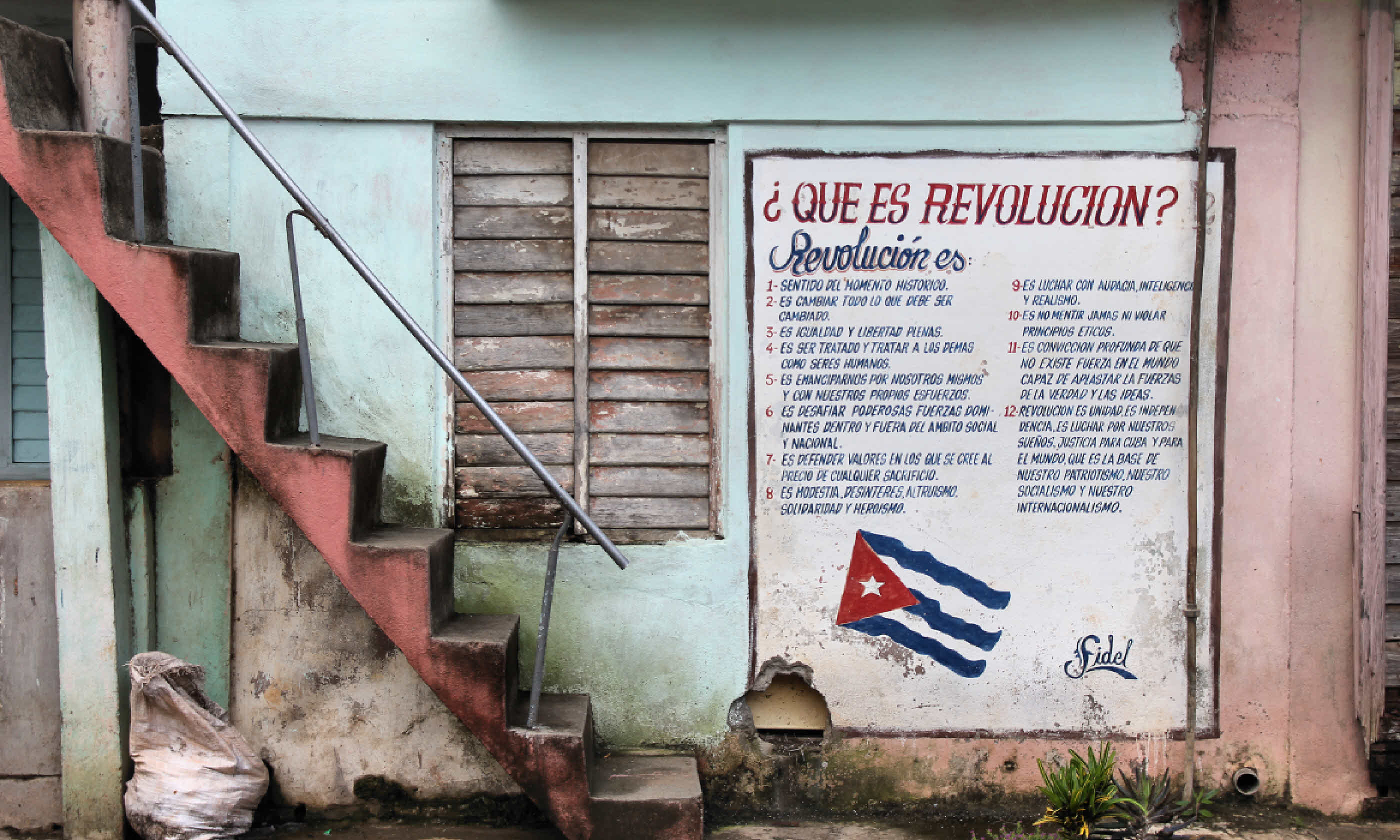
Fertile forests, azure seas, foot-tapping tunes and delicious desserts – don't miss the quirky eastern city of Baracoa, Cuba
Christopher Columbus island-hopped south from the Bahamas to Cuba on his first voyage to the Americas, penning superlatives about these newly seen tropical lands. But when his caravel sailed into a discus-shaped bay on the north-east coast of Cuba, he reached for the ship’s eraser to correct his autumn 1492 diary entry.Addressing his royal patrons in Spain, he wrote: ‘This country, Most Serene Highnesses, is so enchantingly beautiful that it surpasses all others in charm and beauty... I was so astonished at the sight of so much beauty that I can find no words to describe it. For in writing of other regions, I have wrongly used the most exalted language I knew, so that everyone has said that there could not possibly be another region even more beautiful...’
Columbus was the first Westerner to be seduced by Baracoa; roughly 500 years later, I was also falling under its spell.
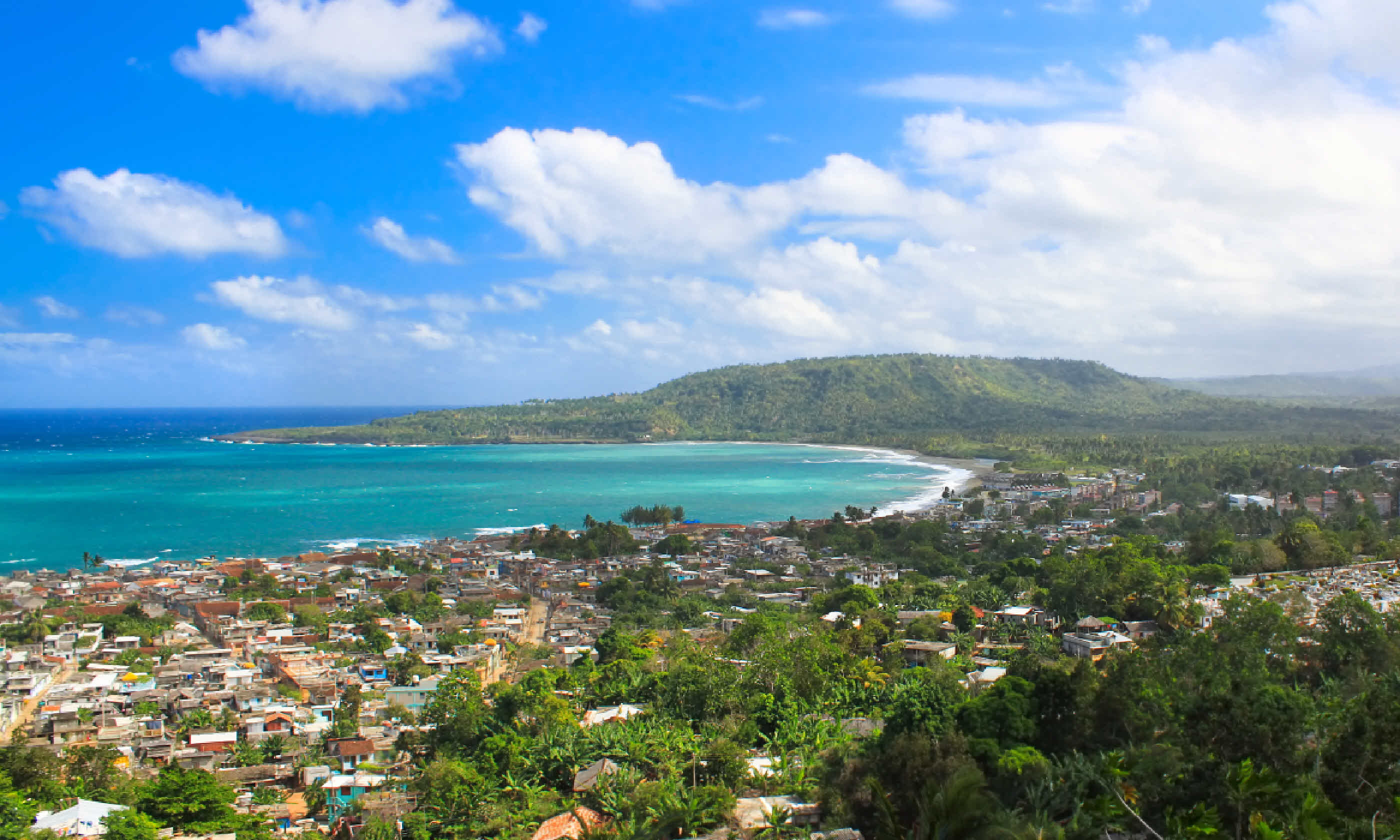
Panoramic view of Baracoa
This coastal corner of Cuba is flushed by 29 rivers. The hills are pregnant with royal palms, chocolate trees and coffee bushes, and the wildlife wins world records: the planet’s smallest bird, bat and frog all choose to live in the Baracoa postcode.
The tiny city itself – founded 20 years after Columbus’s visit, as Cuba’s first city and capital – is strung out in a rectangle of wonky streets. Set back from the Malecón ocean wall, it bakes in a strong Caribbean light, and its people share in a collective memory of fables and legends. There is an air of magic realism here that blends Enid Blyton escapist fantasy, Gabriel García Márquez small-town drama and historical fact.
While most visits to Cuba focus on the white-sand northern beaches and islands, or the crumbling charms of Havana and Trinidad, Baracoa serves up a more complex and alluring platter. Here, in a few days, you can climb mountains, swim in cool rivers, bathe on beaches, explore Indian remains, and gorge on chocolate and coconut.
We arrived in Baracoa by taking La Farola, a concrete highway to paradise that rises near the Caribbean sea in Guantánamo province. It was only chipped through the mountains in 1965, in one of Fidel Castro’s first big engineering projects. Before then Baracoa was isolated from the rest of the country, reached only by boat.
After plunging and lurching for 120km, the road flattened out at the entrance to the city. Attacked by pirates and destroyed by fire in 1652, today’s Baracoa is a jumble of 18th-20th century houses with portals and columns, French architectural flair and licks of vibrant new paint.
It’s also bound by three pint-sized fortresses built to repel rampaging buccaneers who sacked ships bound for the Old World. Life revolves around the sea-thrashed Malecón, three wedge-shaped parks and the gaggle of bars skirting the main Parque Independencia. We set out on a series of day trips to explore the city and its surrounding natural beauty.
Before Columbus wrote the script for the western discovery of the New World, aboriginal Indians, known as Taínos, lived in eastern Cuba. Official history extinguished the Taínos from the records after a cruel demise by disease, massacre and slavery, but their traditions and DNA have survived to this day.
Over at Baracoa’s Museo Arqueológico, director Roberto Orduñez Fernández explained that there were no longer locals with pure Indian blood, but there were Cubans with inherited genetic traits.
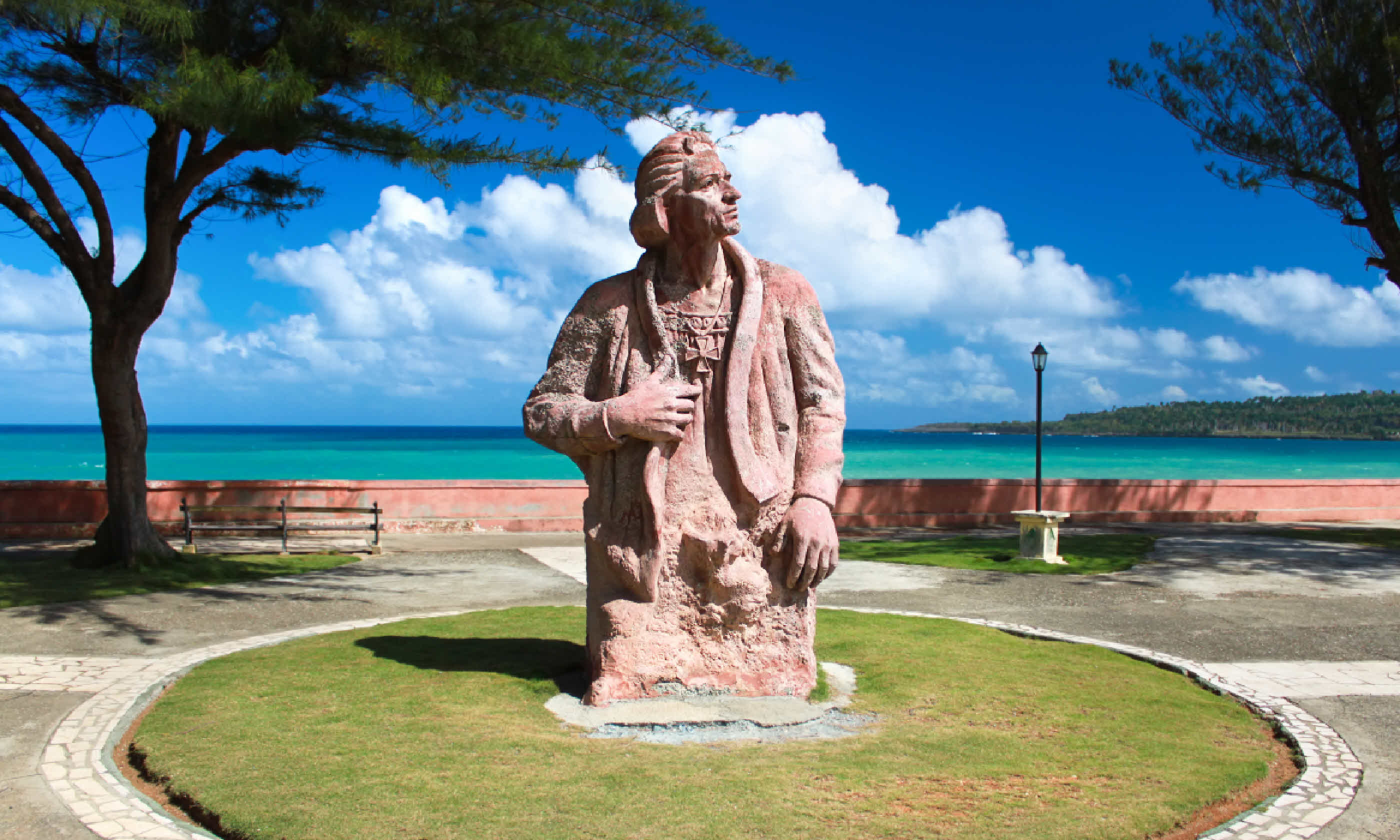
Cristoforo Colombo memorial statue (Shutterstock)
“And Taíno traditions do live on: you’ll still find people making casabe (yucca bread); and over at Boca de Miel village, you can see thatched huts called atarazana, which are still used to cover canoes. And of course, there’s smoking.”
Yes, the Taíno Indians were the first exponents of one of Cuba’s greatest pastimes, tobacco smoking. A one-eyed wooden tobacco idol from eastern Cuba is one of the star displays in Havana’s Museo Montané, and would originally have been used by the Taíno to invoke the spirits in ceremonies known as cohoba (hence the rolling of Fidel’s signature smoke, the Cohiba, in 1966).
You can still visit two of the old Taíno chiefs, too. Inside Baracoa’s archaeological museum lie the alleged remains of the Taíno chief Guamá, who rebelled against the Spaniards and was murdered by his brother with an axe crack to the head. And nearby, facing Baracoa’s diminutive cathedral, is a statue of another rebellious headman, Hatuey, who left the neighbouring island of Hispaniola to warn his Cuban kin of the advancing Spanish party, and was burnt at the stake for his audacity.
On the day of his execution, so the story goes, a strong wind stirred up Hatuey’s ashes at the stake, and later a fractured, coloured light – his wind-whipped ashes – could be seen will-o’-the-wisping across the hills. The locals call it the Luz de Yara (Light of Yara).
At 4.30am the next morning, I thought I could see Hatuey’s circling cinders in the lunar light myself. I was standing on the beach at Playa Duaba, just north of town, and shadowy white images were flitting about in the pre-dawn haze. But in fact these ghostly figures weren’t the rebel’s ashes but busy fisherman preparing to capture the tiny tetí fish.
The tetí are a Baracoa delicacy, and catching them is a tradition with ancient roots and considerable superstition attached. Under waning moons, the tetí leave the sea and surge upstream to spawn, like a vast silver serpent in the river. But their exact arrival time is surrounded in mystery, and nobody even seems to know what kind of fish they are.
We were with 73-year-old Benito Garrido, a tetí fisherman who has been trailing the waning moon most of his life. While we sat on the sand next to a coconut-husk fire, he confided: “Let me tell you a secret... Men with bad intentions cannot collect the tetí. I tell troublemakers to get out of here. Also, women with menstruation cannot collect the tetí – the fish flee...”
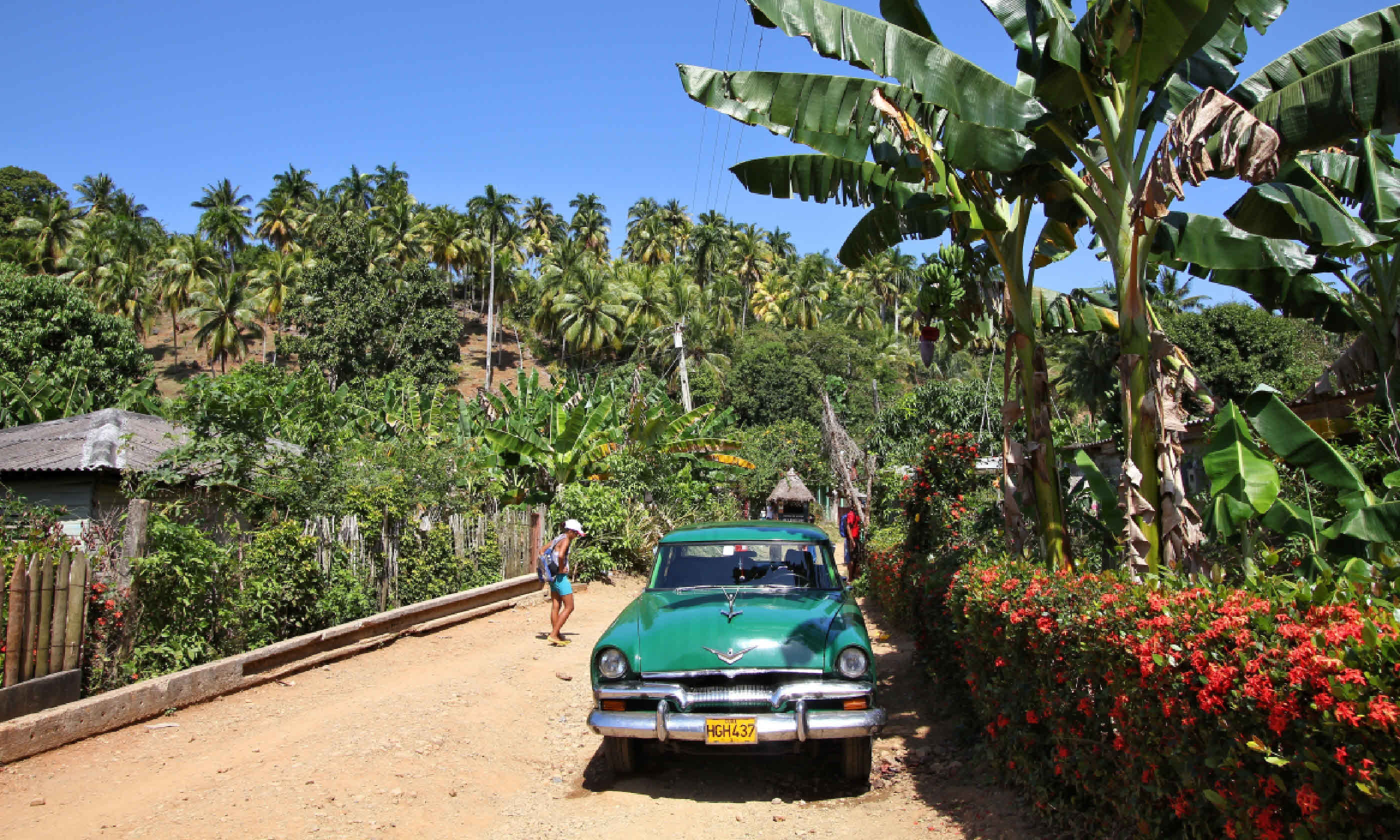
Oldtimer car in Baracoa, Cuba
Refreshed by fire-roasted coffee, we set off to the Río Duaba, where standing nets were blocking the river flow, capturing thousands of clay-white baby eels and millions of glassy tetí. Locals transferred the wriggling eels back into the water, while the tetí were separated and stuffed in buckets and tins. Garrido even ducked underwater with his net to gather up any escaping critters.
That night, we raised a rum with Garrido as we savoured the tetí he had caught, cooked with garlic and tomato, followed by home-grown chocolate at his small home on the edge of town.
From harvesting the fruits of the sea, we turned to explore Baracoa’s mountains and its fruitful forests, source of much of the town’s wealth.
After wading past the polished grey boulders of the Río Duaba, we started our ascent of El Yunque (the Anvil), the flat-topped mountain that looms 575m above Baracoa. Our path was scattered with tiny white flowers, like tropical snowflakes, and butterflies flitted in the light. Guide Andrés snapped a cocoa pod from a tree trunk – over three quarters of the country’s cocoa is collected in Baracoa – and we crunched into a bitter seed. A cute green Cuban tody – like a robin with a green paint job – watched us as we snacked.
And then it was on uphill, sweating up the incline, tramping on fallen avocados and mandarins, and stepping around resting snakes and monstrous millipedes.
From the summit, alongside high-flying scarlet dragonflies, we surveyed Baracoa’s bounty. The crystalline rivers Toa, Yumurí, Miel and Duaba flowed through lush, palm-rich forests towards the turquoise sea, and Baracoa itself sat handsomely by the harbour. It was a vision of a primeval paradise.
But if the view from El Yunque suggested some ecological Eden, further to the north of Baracoa, beyond the broad Rio Toa, we found an even more impressive cradle of biodiversity. The forests of Parque Nacional Alejandro de Humboldt tumble down to the sea from the Sagua-Baracoa mountain range. The park is a World Heritage site and an ecological hothouse with a long tick-list of endemic species. As well as myriad miniature critters, I’d heard it was home to the Cuban solenodon, a snouty-nosed nocturnal mammal, and a handful of manatees that slurp the cool waters of Bahía de Taco, another bag-shaped bay sewn up by mangroves.
Perhaps unsurprisingly, we saw neither solenodon nor manatee when we visited, but the abundant flora was every bit as fascinating as the park’s secretive fauna.
We walked a mountainous trail lined with gangly Cuban pines, hundreds of species of fern, pineapples and orchids. In the humidity, we soon grew thirsty and so Jorge, our guide, helped us out: “These bromeliads, here, trap water. When Fidel and Che were tramping through the Sierra Maestra during the 1956 rebel campaign, they were drinking water from these plants.”
Presumably hard-man Castro would have been unimpressed by Baracoa’s easy-going beach scene, but after days of hiking, fishing and indigenous culture, we felt we’d finally earned some R&R.
Beyond the black-sand Playa Baracoa lies the idyllic fishing village of Boca de Miel. A wooden bridge twists its way across the mouth of the River of Honey, where fishermen cast nets against the towering backdrop of coconut palms, swaying their fronds like Rastafari dreads. It is said that anyone who bathes here will return to Baracoa, and we slipped into the cool waters, trusting to the river’s legend.
Banana trees line this coast, and we wandered on along an old railway line built to carry the fruit to the bay for export to the US. Baracoa luxuriated in a ‘green gold’ boom in the first half of the 20th century, until a fungal plague ruined the industry. Today, the rusting lines and an abandoned engine mouldering in a coconut-husk cemetery are the only remnants of the trade.
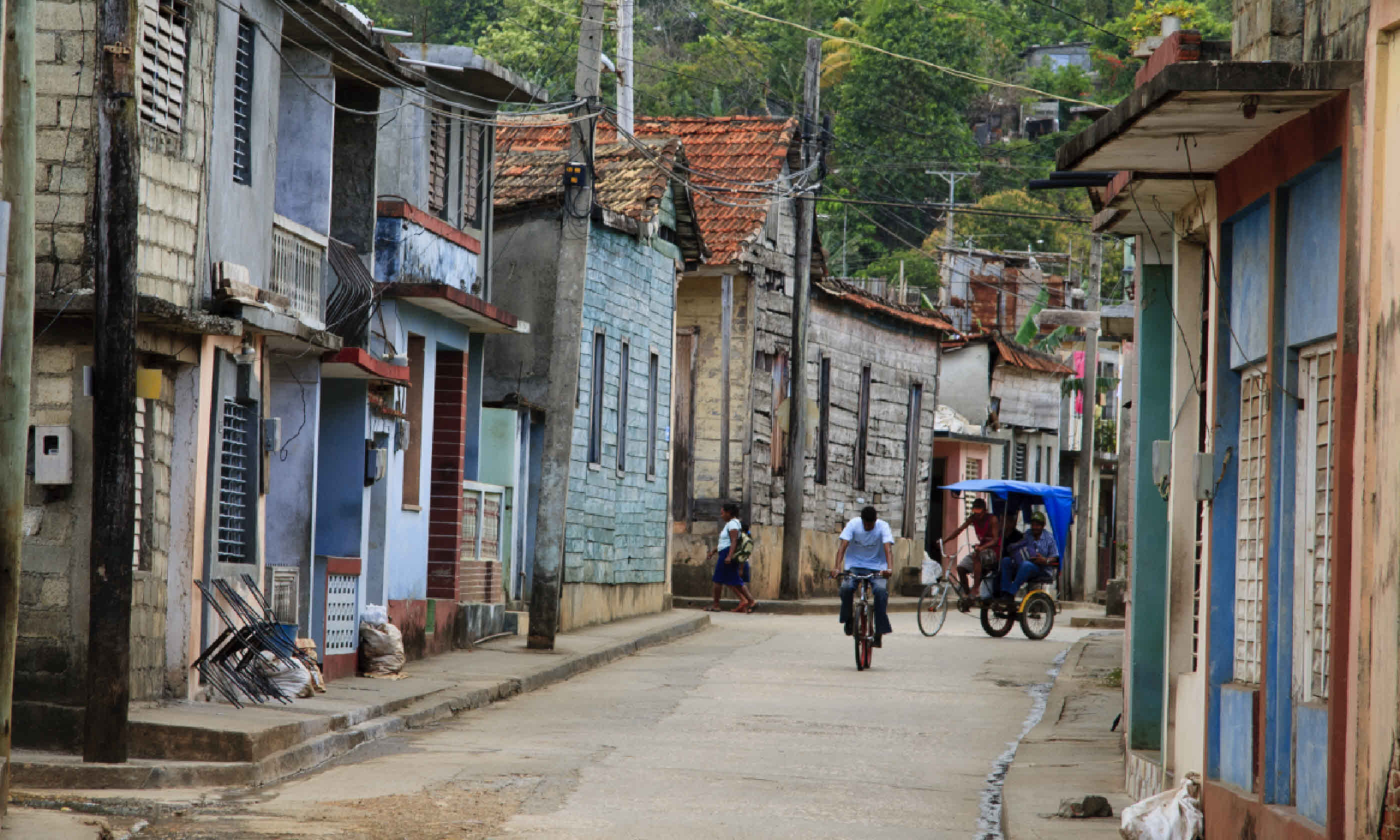
Backstreet, Baracoa (Shutterstock)
Continuing on, we approached Mata Bay, where we were invited to a celebration of early Cuban music and a spread of local foods. (Such impromptu hospitality seemed wonderfully common in Baracoa.) After spiralling around to the live band, we refuelled on bacán – a local dish of crab mixed with mashed banana, lemon and coconut milk, and boiled in banana leaves.
Later that night, back in Baracoa, our musical education continued at the town’s small but wonderfully atmospheric Casa de la Trova (trova house). Trova – the sound of Cuba’s 19th-century troubadour musicians – is one of the deep roots of Cuban music, and the little venue in Baracoa, with its whirring wooden ceiling fans, ebullient MC and mojitos on tap, is one of Cuba’s best places to lap up its influence. Legendary salsa from Baracoa’s bands thundered into the night for foreigners and locals bent on the temptations of sensual dancing.
Following a night of intense twirling around the Trova floor, we found ourselves in need of a hangover cure on our final day. We found it in the beachside home of Rafael and Carmen Jiménez Fuentes. Rafael, 90, has collected coconuts all his life and showed me his curved feet, the result of a lifetime of scaling palms. Carmen, meanwhile, is famed for the best cucuruchos in the area: shredded coconut mixed with almonds and honey wrapped in a cone of palm tree leaf. As we tucked into her homemade dulce and watched the waves roll in on the beach, the mojito fug slipped away.
Considering Baracoa’s 500 years of isolation, I hadn’t expected to find such hospitality here in this town in Cuba’s far east. But everywhere we went, the Baracoan welcome had been warm, all-embracing and buoyed by sharp chistes (jokes). Keen to return to all this kookiness, we again soaked in the River of Honey, enraptured with the promise of its legend.
Baracoa had wooed us with its folklore and beauty, and we had succumbed to its magical aura. As Christopher Columbus had sighed into his diary: ‘The small birds and the greenness of the fields made me want to stay there forever…’
3 hidden wonders of Cuba | Inspire me... More
Historic Havana | Destinations... More
Cuban homestays | Destinations... More
Take a look at our Cuba travel guide for trip ideas and advice | Plan a trip... More
Polly Evans explores the other Guantánamo Bay | Destinations... More